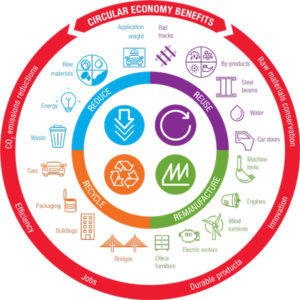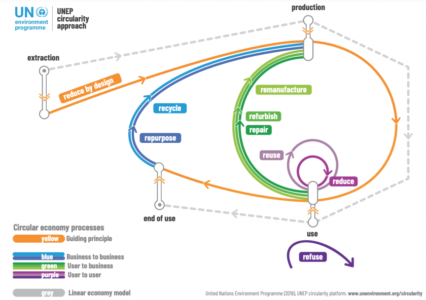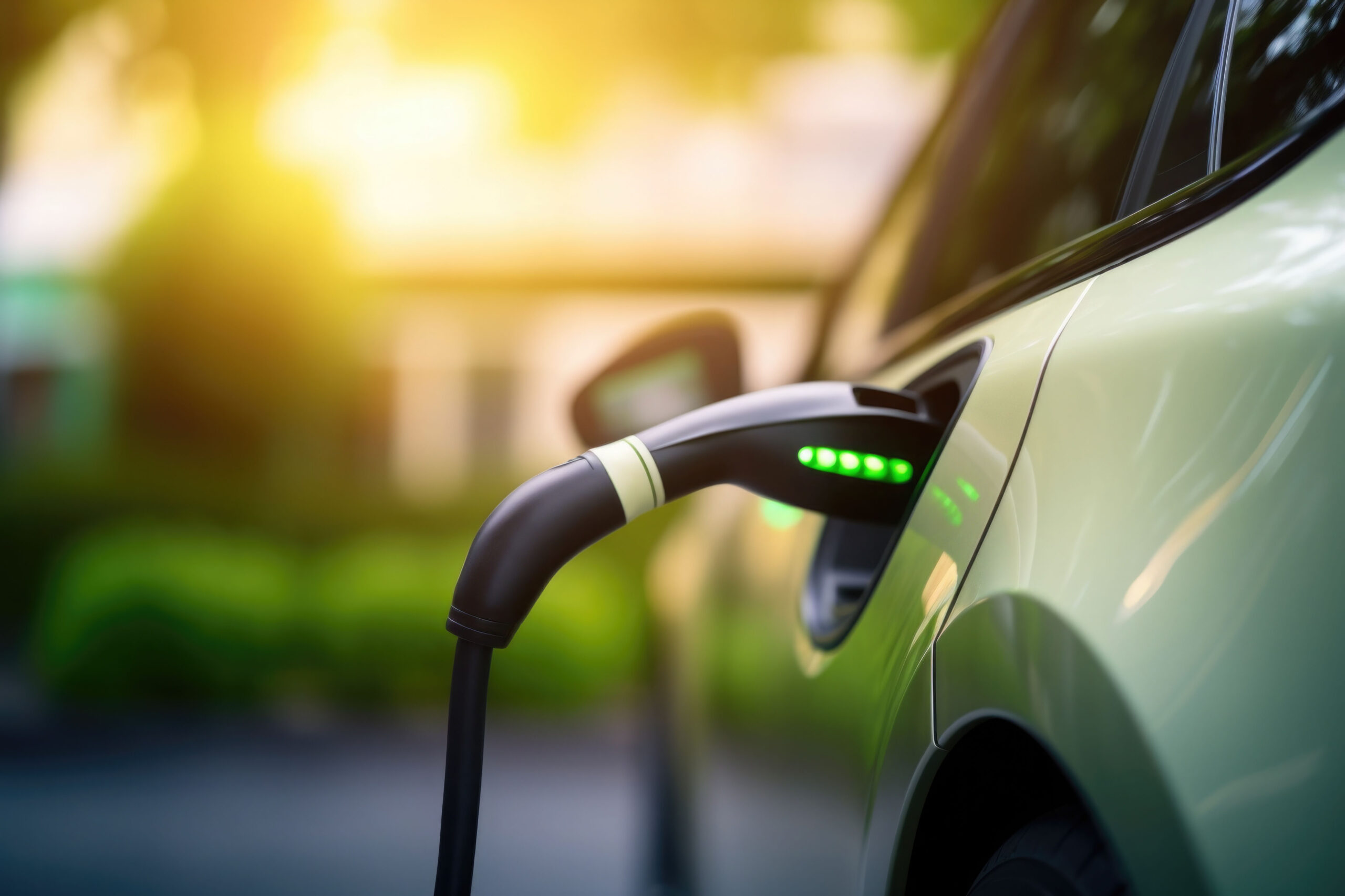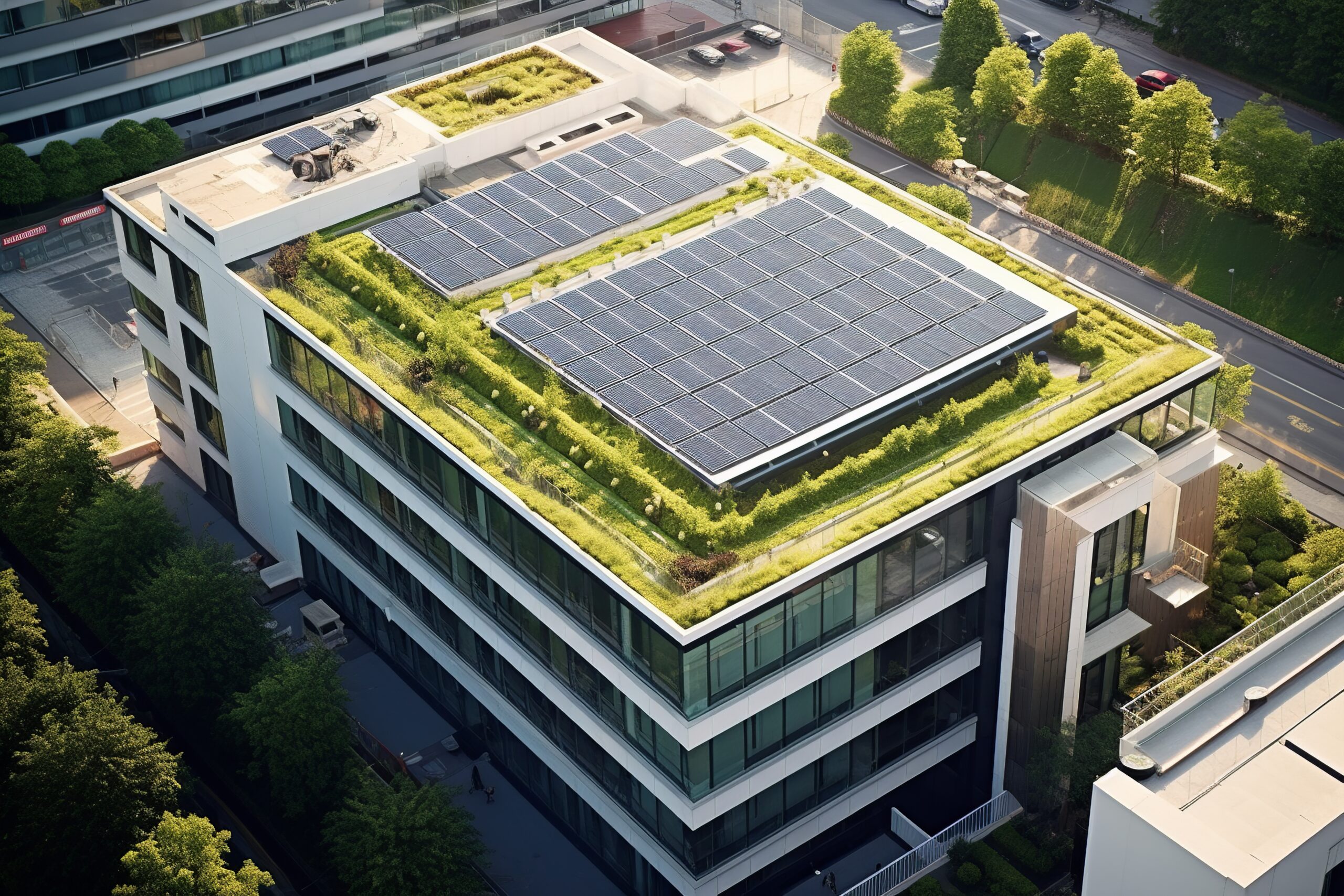
Extending product life cycle as a key lever for sustainable development
The environmental impact of products over their entire life cycle is defined by the resources required to create and run them and manage their end-of-life. This is a key issue at a time when environmental awareness is increasing, and it varies greatly from one product to another. Mobilizing the industrial sector for a clean and circular economy is one of the 12 areas of the Green Deal for Europe presented in December 2019. The main objective is to make Europe the first climate-neutral continent, notably by achieving carbon neutrality by 2050. In this context, the February 2020 law on waste prevention and a circular economy imposed the first level of measures in France.
The objective of public authorities, through European and French regulations, is to shift to a circular economy model and move away from a linear economy one, which consists in producing, consuming and dumping. There are several ways of doing this, including extending the lifespan of products, recycling, and eco-design processes. Through life-cycle analysis, we can understand the environmental impact of manufactured products from cradle to grave and act on the phases that generate the most CO2 emissions. An April 2021 study conducted by OPEO, a consulting firm specialising in industry, and the National Institute for the Circular Economy (INEC) shows that the circular economy model is viewed by 85% of French manufacturers as an economic opportunity.
The circular economy around the world
According to a report by the Netherlands-based circular economy promotion organisation, Circle Economy1, the level of circularity in the world was well below 10% in 2020. In many African countries, the circular economy is often seen as a way for Northern nations to become more self-sufficient and purchase fewer raw materials from them, according to analyses conducted by the Ellen MacArthur Foundation. Rwanda, Nigeria and South Africa have therefore founded the African Circular Economy Network (ACEN), which aims to disseminate good practices within the field. However, progress remains very modest at this stage.
In Asia, China, Japan and South Korea are the main countries propelling the circular economy model, but the approaches differ: while China is promoting clean technologies and eco-design, Japan is prioritising recycling and waste management. Across the rest of the continent, it is still far from being a major concern, according to Circular Economy Asia, based in Malaysia.
In the United States, the momentum around the circular economy and its levers has slowed down in recent years, as have most efforts to green the economy. Uncle Sam’s country has the highest per capita consumption of plastic (130 kg) in the world and is the second largest producer of manufactured goods globally, but only recycles 10% of the plastic it produces2. To improve these recycling rates and more generally to encourage good practice in this area, the Federal Government is introducing new legislation and funding programmes.
As for international organizations, the UN has adopted the circular economy in its Sustainable Development Goals. The World Bank, the G7 and the OECD are also taking a close interest.
Along with China, Europe stands among the leaders in the development of the circular economy. In 2020, the old continent adopted its second circular economy plan, which goes further into design issues. However, there is still a need to standardize the actions of individual states to create a common framework at European level.
Increasing the lifespan of products and ending planned obsolescence
The circular economy encompasses multiple issues. Extending the lifespan of products is a major factor in reducing their environmental impact. Taking the example of a computer, its life-cycle analysis covers raw material extraction, manufacturing, transport, distribution, use and end-of-life management. The manufacture of a 2 kg computer requires 600 kg of raw materials. Out of a total of 156 kg of CO2 emitted over its entire life cycle, 103 kg are generated by placing it on the market and only 53 kg, i.e. one third, are emitted during its use3. These figures underline the importance of extending the lifespan of manufactured products.

The first step in extending the lifetime of products is to be able to repair them when they stop working. However, this requires the products to be repairable, which is not always the case. Although the repair sector was marked by a long phase of decline, it is now experiencing a strong rebound. The industry is made up of a multitude of players, including manufacturers and sellers of replacement parts, independent repairers and second-hand dealers.
For computers or digital products, a repair is not always necessary. A simple software update or the replacement of an obsolete component can often extend the life of a product at a lower cost.
After repairs or any updates, refurbishment is another interesting method. As is the case in the automotive or telephone industries, the purchase or recovery by companies specializing in the refurbishment of products and their resale after repair and upgrades, makes it possible to put an almost new product back on the market. Many players in the refurbishment business are emerging to put a product back on the market for a similar or a different purpose. For example, with the development of self-consumption, some manufacturers are reusing batteries from depleted electric vehicles to integrate them into stationary storage solutions for buildings.
Finally, good maintenance is key to keeping equipment in optimal working order, which is a major factor in extending its lifespan. Taking the example of a boiler, if it is never descaled or correctly set, its lifespan will be considerably reduced. Today, beyond preventive maintenance, which requires scheduling maintenance according to a given time frame, predictive maintenance solutions are emerging. Algorithms based on artificial intelligence are able to assess how the equipment is working and indicate the maintenance actions to be carried out.
Recycling products when their lifespan cannot be extended
When manufactured products cannot be repaired, they should be recycled. Recycling involves two distinct steps. The first is to collect the defective equipment. The second is to separate the different materials that make up the product in order to recycle them.
Today, despite the strengthening of French and European regulations in this area and the constant increase in budgets devoted to it, 48% of household waste electrical and electronic equipment (WEEE) is simply thrown away. Only 23% is reused4. For professional WEEE, the situation is even more worrying, with only 27% of equipment collected5. These collection rates are very low compared to the European target of 85%. Some equipment goes unnoticed by the eco-organisations in charge of collection and ends up in rubbish bins, at a waste disposal site, with scrap dealers who by definition only recover the reusable metal, or it is exported.
Collected manufactured products end up in recycling centres, where the different components are separated and then recycled into a new raw material. For a compact fluorescent lamp, the aim is to cut the glass, which is then separated from the metal, while ensuring that the gas in the source is collected.
An increasing number of manufacturers are ensuring that they use these secondary raw materials (SRM)6 to manufacture new products. They differ from the extracted raw materials in that their purity level is often much lower. In some cases, the purity of these recycled materials allows them to be reused, but it is not that simple. Some manufactured products, especially high value-added products, require pure raw materials. For example, manufacturers recycle a very large proportion of the metal they put on the market. These metals have been mixed together or have lost their purity during the manufacture of the products. One common outlet consists in melting them down to make rebar, a form of recovery with a lower level of quality.
Eco-design and use of recyclable and recycled materials
To reduce the environmental impact of everyday objects, it is important to limit the use of materials and to prepare products for recycling, right from the design phase. Eco-design is a product development process that encompasses reuse, recycling and the use of SRM. In most cases, the aim is to limit the mixing of materials and to use recycled, bio-based or recyclable raw materials.

Eco-design is increasingly adopted by manufacturers to demonstrate their commitment to sustainable development. It is also an important economic lever. According to a survey of SBF 120 companies, 87% of them consider that the primary interest is economic, followed by the positive impact on their reputation at 61%. Since consumers are increasingly aware of these issues, these topics are therefore important selling points. Taking into account the methods used to extend the life of products or to prepare them for recycling from the design phase is a practice to be adopted more widely. One of the main current challenges is to continue raising the awareness of both manufacturers and end-users in order to encourage good practices and reduce the environmental impacts of their products.
1 Source Circular Economy: “The Circularity Gap Report 2020 – When circularity goes from bad to worse: The power of countries to change the game”
2 Source Greenpeace: “Greenpeace USA 2022 Survey”
3 Source ADEME: “La face cachée du numérique 2021” [The hidden face of digital 2021]
4 OCAD3E Study: Phase 2 report – Modélisations et plan d’action (DEEE ménagers) [Modelling and Action Plan (Household WEEE)] – Version of 08/09/2021
5 OCAD3E Study: Phase 3 report – Modélisations et plan d’action pour les DEEE professionnels [Modelling and Action Plan for professional WEEE] – Version of 24/09/2021
6 SRM: Waste that has been processed and/or combined to obtain a product that can be used in manufacturing processes to replace the original raw material.

